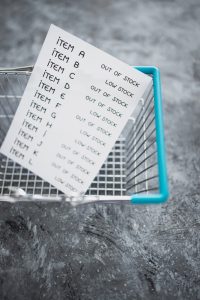
Objective
Our Construction industry client had ongoing challenges with the way their ERP allowed them to record project materials. They had a mix of quantity-tracked warehouse items, tracked consumables and supplier items price lists used for procurement.
They had previously attempted to work around their ERP software shortcomings by recording every item as a system inventory item. However, over time this had caused complications in the procurement process, as well as in their ability to categorise and manage these items. Finally, as the supplier item lists had increased, the mechanism available to perform recurring supplier price updates had become time-consuming.
We were engaged to find a way to better manage their non-Stock based Construction Materials handling process within the ERP. If this wasn’t possible, we needed to find an alternate software solution and process to cater to the business need.
Solution Delivery
- Before we could consider solution options, we needed to understand the current data and how it was used, as well as any peripheral systems used to manage the process. We began by reviewing and externally recategorising all items set up in the Inventory module, splitting them into stocked items, stocked consumables and purchased items. We also considered the external pricing imports provided by the suppliers and the Excel sheets used by site staff when requesting parts.
- It was easy to identify that a large percentage of items recorded as inventory, were not actually inventory but Supplier Parts Lists items/Supplier Catalogue items.
- Where these items existed, there was a disconnect between the item code used by the supplier and the item code used as the inventory item. This was due to the ERP inventory wanting a common code to be used across multiple supplier records. This makes sense in a traditional inventory environment, but not in this style of procurement environment.
- Over 10,000 Inventory records were condensed back to 7 stocked items; and 5700 stocked consumable items. The remainder of the items related to supplier parts lists.
- We determined that the method of handling the supplier parts lists that would provide optimal procurement processes and be cost effective, was to develop a submodule within the ERP. This submodule would allow for easy import of current parts lists, simple updates of new buy prices, storage of effective start dates of the buy price; as well as seamlessly integrating into the purchasing process. This was possible to due as a standalone customisation, without the expense of working with the ERP vendor.
- Two additional, critical requirements that we incorporated were:
- the ability to do an additional import of Supplier Catalogue data, from a pre-determined file format, and
- the ability to pre-load buy price changes provided by the Supplier, ahead of time
Achievements
- The new Supplier Catalogue sub-module went live with a selected large Supplier. Once this had worked successfully for a month, the rollout extended across all Suppliers providing file-based price lists.
- 4700 items were moved into this new supplier catalogue system, with the potential of other supplier part and price lists being added as needed.
- Staff were happy with the new process and the way it eliminated processing errors. The only item they were not keen to part with were the Excel procurement request sheets used by site staff.
If you’d like to learn more about this project or talk to us, click here to contact us.
